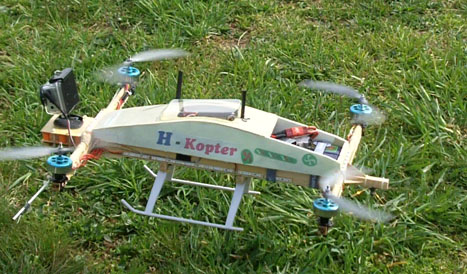WASHINGTON – Gov. Martin O’Malley co-signed a letter with New Jersey Gov. Chris Christie and Virginia Gov. Robert McDonnell Friday supporting a collaborative effort among three universities that would make Maryland a new site for testing civilian drones.
Under a 2012 law, the Federal Aviation Administration launched a competition to find six nationwide test sites for drones, with the final picks expected Dec. 31.
The University of Maryland, College Park submitted its own bid to the FAA while Rutgers University and Virginia Tech sent a joint application as the Mid-Atlantic Aviation Partnership.
The three universities will collaborate and partner on the test site if either or both teams are selected. There are 25 teams left in the competition.
Maryland’s proposal includes the use of airspace from the Naval Air Warfare Center Aircraft Division, located near the Patuxent River in Southern Maryland. Airports in Crisfield and St. Mary’s County would also be used.
The growth of the Unmanned Aircraft System (UAS) industry means that in a few years the public could be using small, unmanned devices in their homes, said Matt Scassero, director of the proposed University of Maryland test site. He likens the innovation and potential for unmanned devices to become part of everyday life to the ubiquity of smartphones.
“When you have a group like this, that’s a resource that the FAA can take advantage of… they get all three (universities) at once,” Scassero said.
There are many technical issues the FAA is trying to resolve through research at the new test sites. The problems include the introduction of pilotless aircraft into a sky full of manned planes, and the development of sensors that detect and avoid other vehicles, Scassero said.
“There’s no real place for the UAS industry to test aircraft without government sponsorship,” said Tony Pucciarella, director of UAS at Ausley Associates, a Maryland-based organization that helped the University of Maryland with its proposal. The creation of test sites will allow the industry, which includes private companies, to test unmanned aircraft without first clearing with the government.
The expansion of Maryland’s UAS sector has the potential to create 2,500 jobs over the next 12 years, O’Malley’s office said, and also has the ability to boost Maryland’s private sector.
Pucciarella called drones a “game changer,” and said that job creation will come to the state in two tiers. Initially, the tech industry will benefit, hiring engineers, designers and software specialists.
But as the FAA will only choose six states, “detachments,” or workers, looking to use the test site from neighboring states will visit, boosting local economies through hotels, restaurants and shops.
Maryland’s test site will focus on drones for commercial use, including agriculture and search-and-rescue, and “nothing with weapons,” Pucciarella said. One use would be for fisheries, using airborne infrared detectors to record movements in the water.
Right now, this can only be done with binoculars, Pucciarella said.
The prospect of skies full of whirring and flying machines has concerned agencies, including the FAA, which has so far struggled to regulate them. Civilians are allowed to fly unmanned drones at 400 ft. or below in unrestricted airspace.

